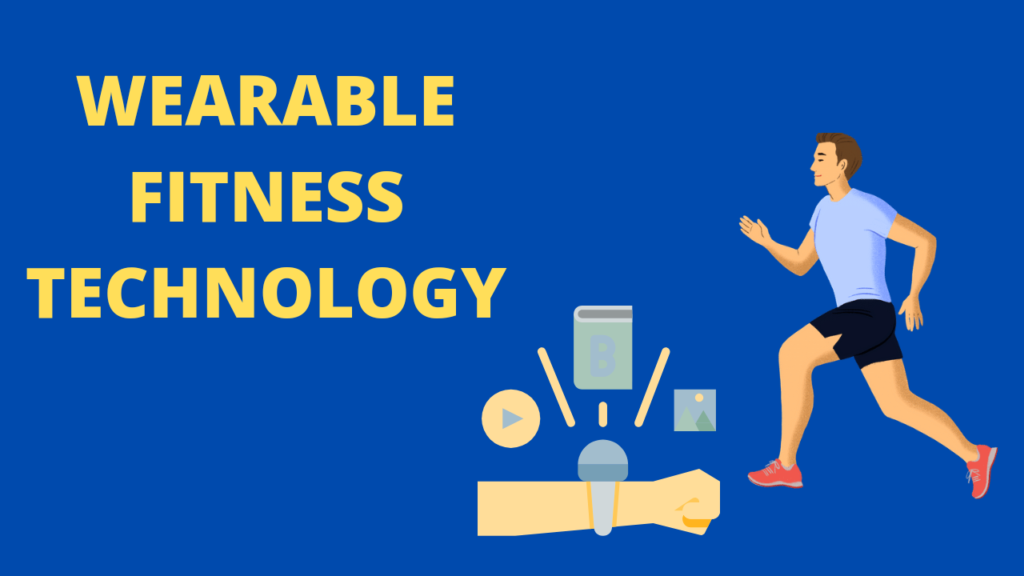WEARABLE FITNESS TECHNOLOGY

“Wearable Fitness Technology” is an exciting and evolving topic that covers a range of devices designed to enhance physical activity and monitor health. Here are key points to explore:
- Overview of Wearable Fitness Technology:
- Define what wearable fitness technology is, providing examples such as fitness trackers, smartwatches, and other health-monitoring devices.
- Fitness Tracking Features:
- Explore the various fitness tracking capabilities of wearable devices, including step counting, distance tracking, calorie expenditure estimation, and heart rate monitoring.
- Health Monitoring:
- Discuss how wearables go beyond fitness, offering health-monitoring features such as sleep tracking, stress level assessment, and even ECG monitoring in some advanced devices.
- Integration with Smartphones and Apps:
- Highlight the connectivity of wearables with smartphones and dedicated apps. Discuss how these integrations provide users with comprehensive data analysis, goal setting, and personalized feedback.
- Advancements in Biometric Sensors:
- Explore the cutting-edge biometric sensors integrated into wearables, such as pulse oximeters, skin temperature sensors, and blood pressure monitors.
- Impact on Physical Activity Levels:
- Discuss research findings on how wearable fitness technology has influenced physical activity behavior, including motivation, goal achievement, and sustained engagement.
- Role in Personalized Fitness:
- Examine how wearables contribute to personalized fitness by analyzing individual data to provide tailored workout recommendations, activity goals, and recovery insights.
- Remote Health Monitoring:
- Discuss how wearables can be used for remote health monitoring, allowing healthcare professionals to track patients’ vital signs and activity levels from a distance.
- Challenges and Limitations:
- Address challenges associated with wearable technology, such as accuracy concerns, privacy issues, and potential user dependence. Discuss how the industry is addressing these challenges.
- Future Trends and Innovations:
- Explore emerging trends and innovations in wearable fitness technology, such as augmented reality (AR) fitness experiences, more advanced health sensors, and integration with virtual health platforms.
- Ethical Considerations:
- Discuss ethical considerations surrounding wearable fitness technology, including data privacy, consent, and potential implications for insurance and employment.
By delving into these aspects, you can provide a comprehensive overview of how wearable fitness technology is reshaping the way individuals approach health and fitness, as well as its potential impact on healthcare practices.
“Wearable Fitness Technology” is an exciting and evolving topic that explores the impact of technology on fitness and health. Here are key points to consider:
- Overview of Wearable Fitness Technology:
- Define wearable fitness technology, including fitness trackers, smartwatches, and other devices designed to monitor and enhance physical activity.
- Functionality and Features:
- Explore the various features of wearable fitness devices, such as step counting, heart rate monitoring, sleep tracking, GPS capabilities, and integration with smartphones.
- Popular Brands and Products:
- Highlight major players in the wearable fitness technology market and discuss popular devices. Include examples from companies like Fitbit, Apple, Garmin, and others.
- Impact on Physical Activity:
- Discuss how wearable technology motivates individuals to be more physically active by providing real-time feedback, setting goals, and encouraging healthy competition through social features.
- Health Monitoring and Biometrics:
- Explore how wearables go beyond fitness tracking to monitor health metrics, including heart rate variability, stress levels, and even electrocardiogram (ECG) readings in some advanced devices.
- Integration with Smartphones and Apps:
- Discuss how wearable devices often sync with smartphones and fitness apps, creating a comprehensive ecosystem for health tracking, goal setting, and data analysis.
- Role in Personalized Health:
- Explore how wearables contribute to personalized health by providing insights into individual activity patterns, sleep quality, and overall well-being.
- Challenges and Limitations:
- Address challenges associated with wearable fitness technology, such as accuracy concerns, data privacy issues, and the potential for information overload.
- Fitness in the Workplace:
- Discuss the use of wearable fitness technology in corporate wellness programs, promoting physical activity and health among employees.
- Future Trends and Innovations:
- Explore emerging trends in wearable fitness technology, such as the integration of artificial intelligence, virtual coaching, and advancements in biometric sensors.
- Ethical Considerations:
- Discuss ethical considerations related to the use of wearable fitness technology, including data privacy, consent, and potential implications for insurance and healthcare.
- User Adoption and Behavior Change:
- Explore how wearable technology influences user behavior and whether it leads to sustained lifestyle changes. Discuss the psychology behind goal setting and feedback loops.
Wearable fitness technology has transformed the way individuals approach health and fitness, providing valuable insights and motivation for a more active and healthy lifestyle. This topic offers a comprehensive look at the current landscape and future possibilities in this rapidly evolving field.
“Wearable Fitness Technology” is a dynamic and evolving topic that explores the intersection of technology and fitness. Here are key aspects to consider:
- Introduction to Wearable Fitness Technology:
- Define wearable fitness technology and provide examples, such as fitness trackers, smartwatches, and other health-monitoring devices.
- Fitness Tracking Features:
- Explore the various features offered by wearable devices, including step counting, heart rate monitoring, sleep tracking, GPS tracking, and calorie expenditure estimation.
- Integration with Smartphones and Apps:
- Discuss how wearable devices often integrate with smartphones and fitness apps, allowing users to sync data, set goals, and receive real-time feedback.
- Health Monitoring and Biometrics:
- Explore the role of wearables in monitoring health metrics beyond fitness, such as stress levels, blood pressure, and oxygen saturation.
- Impact on Physical Activity:
- Discuss how wearable fitness technology motivates users to engage in physical activity by providing real-time feedback, setting goals, and fostering a sense of competition through social features.






